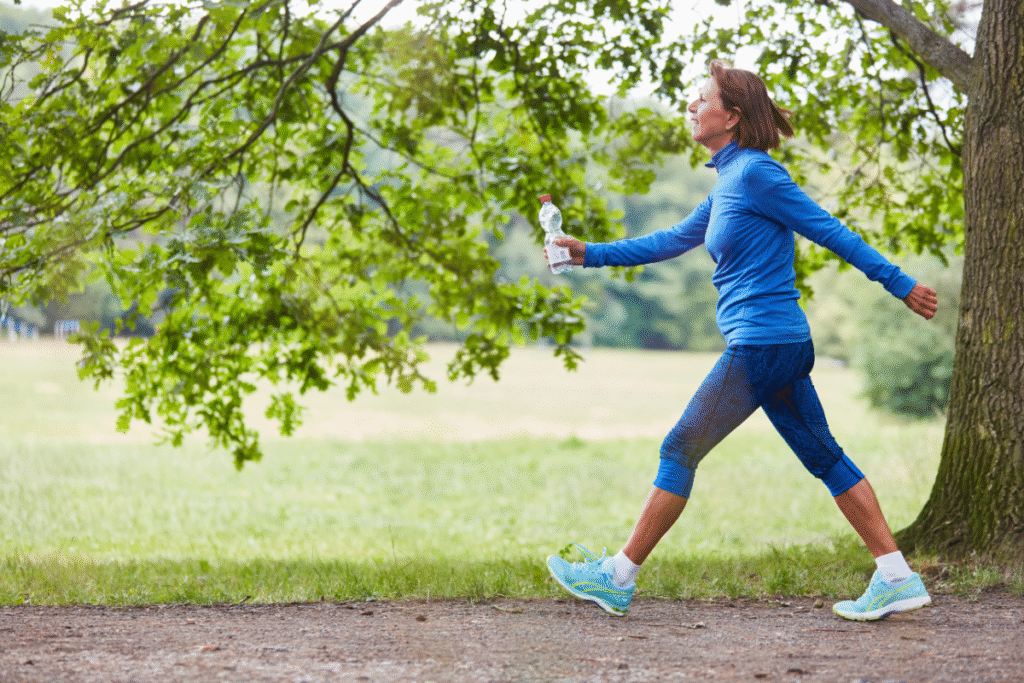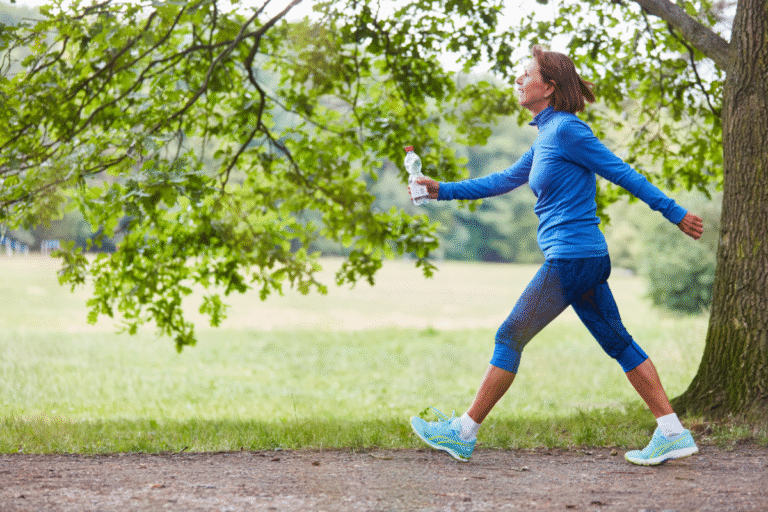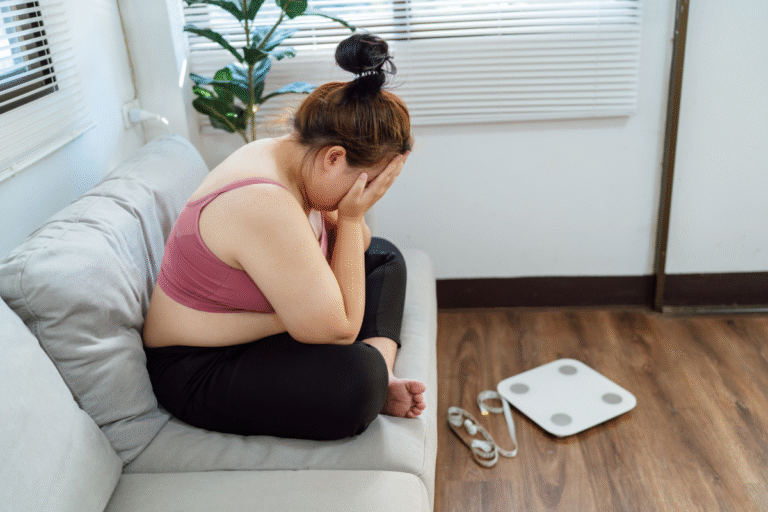
She didn’t think much of it at first.
A woman in her early 40s, deep into her career, juggling work deadlines, Zoom meetings, and after-school drop-offs, finally glanced at her step counter one day.
3,842 steps.
That was her average. Per day.
Not one day of hiking or shopping or running errands. That was her everyday normal.
No wonder the weight had crept on, even before she hit 40. Her job had become more sedentary the more she advanced—more time behind the screen, less time on her feet. And now, the changes were undeniable: new aches in her neck and lower back, tight hips, a general sense of sluggishness, and the growing feeling that she just couldn’t keep up with her family like she used to.
But it wasn’t just about the weight. Something deeper was off.
What the Research Says About Steps and Health
Your body was designed to move. And when it doesn’t, things start to break down—not overnight, but slowly, quietly.
Here’s what the evidence shows:
| Category | Steps per Day | Meaning |
| Sedentary | < 5,000 | High risk of metabolic and cardiovascular disease |
| Low Active | 5,000–7,499 | Below optimal for health; typical for desk jobs |
| Moderately Active | 7,500–9,999 | May help with weight maintenance and general fitness |
| Active | 10,000–12,499 | Ideal for improved cardiovascular health, mood, and energy |
| Very Active | 12,500+ | Boosts fitness, body composition, and insulin sensitivity |
General health recommendation:
✔️ Aim for 7,000–8,000 steps/day to maintain health and reduce disease risk, especially in midlife.
✔️ Want to go next-level? Shoot for 10,000–12,000+ steps/day for fat loss, energy, and metabolic resilience.
Strategic Ways to Get More Steps Without “Exercising”
Adding steps doesn’t mean you need to carve out an hour of extra time each day. Here are some ideas:
- Morning or evening walks: Start or end your day with a 15-minute walk.
- Post-meal strolls: Just 5–10 minutes after eating improves blood sugar regulation.
- Walking meetings: Take calls or virtual meetings on the move.
- Park farther away: Add a few hundred steps each errand.
- Set timers: Get up every hour and walk around for 2–3 minutes.
- Dance, clean, play: Movement is movement—it all counts.
Footwear Matters More Than You Think
Here’s the deal: if walking hurts, you won’t want to do it. And one of the biggest reasons it hurts?
Bad shoes.
Too many women wear flats with zero support, narrow toe boxes, or trendy shoes that destroy alignment.
👣 Here’s what to do:
- Ditch the insoles that came with your shoes—most are junk.
- Swap in supportive options like Dr. Scholl’s, Superfeet, or Powerstep for better shock absorption and arch support.
- For chronic foot pain or post-surgery needs, visit a specialty shoe store for a gait analysis and custom fit.
- Rotate your shoes—don’t wear the same pair every day.
- Don’t walk miles in shoes made for style, not function.
Preserving your ability to walk comfortably—and for long distances—isn’t just about fitness. It’s about maintaining independence and vitality for decades to come.
At Antigravity Wellness, We Meet You Where You Are
Walking is foundational. It’s a core part of how we guide women in reclaiming their health through realistic, sustainable steps.
At Antigravity Wellness, we:
- Evaluate your current lifestyle and step count.
- Help you find your baseline and build up from there.
- Incorporate foot care, joint support, and exercise progression that fits you.
- Never throw you into a program you can’t sustain.
- Focus on whole-body, whole-life care.
You don’t have to jump straight to 10,000 steps.
You just need to start.
Ready to get moving again—in a way that feels good and lasts?
👉 Book your Brief Initial Consult Call today if you’re in Washington or Oregon, and let’s map out your next best step. Literally.
📚 References
- Paluch AE, et al. (2021). Steps per Day and All-Cause Mortality in Middle-aged Adults. JAMA Netw Open. https://jamanetwork.com/journals/jamanetworkopen/fullarticle/2783711
- Tudor-Locke C, et al. (2009). How many steps/day are enough? Sports Med. https://pubmed.ncbi.nlm.nih.gov/14715035/
- Lee IM, et al. (2019). Steps per day and mortality in older women. JAMA Intern Med. https://jamanetwork.com/journals/jamainternalmedicine/fullarticle/2734709
- Saint-Maurice PF, et al. (2020). Association of Daily Step Count and Step Intensity With Mortality Among US Adults. JAMA. https://jamanetwork.com/journals/jama/fullarticle/2763292
- Dufour AB, et al. (2009). Foot pain: is current or past shoe wear a factor? Arthritis Rheum. https://pubmed.ncbi.nlm.nih.gov/19790125/




